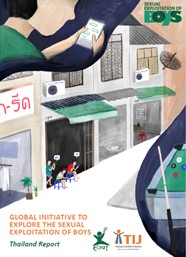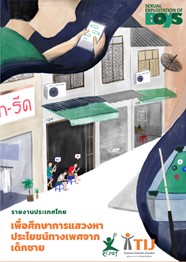In recent years, it has become increasingly apparent that there is a gap in the global understanding of how child sexual exploitation affects boys. While data on the prevalence of all child sexual exploitation is generally lacking, when data does exist, it is often limited to focusing on girls. The limited evidence about the sexual exploitation of boys that does exist indicates that in some settings boys are much more impacted than is commonly thought. Furthermore, particular groups of children are known to be more vulnerable to sexual exploitation, such as those with diverse sexual orientation or gender identity and expression (SOGIE). There is a need for evidence-based understanding of the sexual exploitation of children of all genders. ECPAT’s global initiative to explore the sexual exploitation of boys attempts to address some of these needs. This report focuses on the experience of boys and SOGIE identifying youth in Thailand, a country that has often been at the forefront of actions to prevent and respond to the sexual exploitation of children. To capture the vulnerabilities facing boys and SOGIE identifying youth in Thailand, a survey with frontline service providers, interviews with SOGIE identifying youth who are currently exchange sex, and a legal analysis were carried out during 2020. This report presents those findings.


